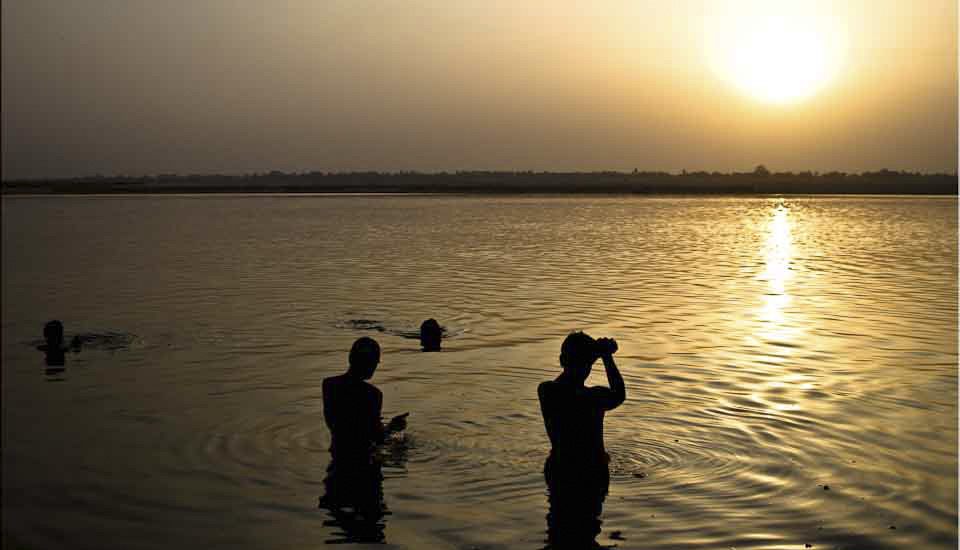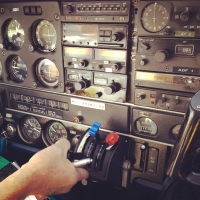.jpg)
A Nepali Spice Palette
The colours and flavours of Nepali food are wonderful, and they start with a perfectly balanced spice mix. This masala dani (spice box) contains some of the more commonly used flavours: salt, turmeric, red chilli powder, cumin powder, fenugreek seeds, coriander powder, and ground carom seeds.
One of the great joys of travel is the food.
The colours, smells, and tastes of local cuisine are so evocative of the place. When you have the opportunity to break bread with the locals, there is a warm friendliness that lives in your memories long after the trip has finished.
I love taking part in cooking classes when I travel. It is not so much that I will replicate the recipes at home; it is more that learning how the local food is prepared enriches the taste experience, and also gives me a glimpse into people’s lives.
The first meal I ever ate in Nepal was at a restaurant in Thamel called – believe it or not – the Kathmandu Kitchen. I guess every city has one – even Kathmandu! Since that first trip, I’ve made a bee-line to momos any time they are available. I just love Nepali food.
On my most recent trip to Nepal, I was especially lucky.
I was there – in part – to participate in a workshop with travel photographer Gavin Gough and photojournalist Jack Kurtz. When we weren’t exploring various outdoor locations (e.g: A Thousand Steps, Boudhanath Stupa, Bhaktapur Ruins, and Swayambhunath, etc.), we were grouped in an airy Airbnb home in Thamel and enjoying meals cooked by our host Indira in a genuine Kathmandu kitchen.
Indira has the deftest hand with Nepali spices that you could wish for, and a love of cooking that is infectious. We persuaded her to give us a ‘cooking lesson’. Of course, when you are dealing with a group of enthusiastic photographers, that involves a lot more watching and clicking than it does dicing and chopping! But we did help a bit – and we definitely enjoyed the final products.
Join me for a typical Nepali meal.
.jpg)
Fresh Produce
Great meals start with the best ingredients. Some of this is from the market; some is straight out of the garden.
.jpg)
Grated Carrot
Although this is a modern household, complete with solar electricity, many of the kitchen tasks are done by hand. It takes time and effort to grate the kilos of carrots that will go into our carrot pudding desert.

Indira and the Moka Pot
An army marches on its stomach, and Indira knows that cooks and kitchen-hands live on coffee.

Maas Ko Daal
Lentils (dal) are a key feature in Nepali cuisine, and there are as many ways of making dahl as there are ways to spell it! Dahl Bhat (lentils with rice), made with yellow or red lentils, is a staple in the country, but black gram beans (maas ko daal) are another favourite. These lentils are cooked in an iron pot, and the herbs and spices are fried in ghee separately and added last.

Nepali Saag – Curried Greens
Saag (greens: spinach, chard, kale, or mustard) are stir-fried with garlic, cumin seeds, salt, pepper, and curry powder for a simple and nutritious side dish.

Pots on the Stove

Slicing Beans
Indira slices her beans lengthwise opposite the vein so that the flavours (fenugreek, Himalayan chives, turmeric, chopped garlic, chili powder, asafoetida, and salt) penetrate.

Whisking the Daal
Once the lentils are soft, they are lightly whisked.

Painting Flavour
Meanwhile, in a fresh pot of heated oil, more spices are being gently fried.

Chopping Garlic
You can never have too much garlic!

Chopping Okra
Another side dish on the menu is tare ko ramtoriya – pan-fried okra.

Salting the Okra
Salt is added to the okra that is cooking with red onions, black cumin, green chilies, turmeric and chili powder.

Chicken in a Pot
Chicken pieces are stewed in preparation for making curry.

Cutting Potatoes
Small potatoes have been peeled, boiled and cooled. Now, they are cut in half …

Alu Ko Achar – Potato Pickle
… and coated in mustard oil with fenugreek, Himalayan chives, asafetida (Hing), turmeric, and chili powder. They are then tossed in final dressing of ginger paste, black cumin seeds, lemon juice and coriander.

Ginger and Garlic in a Pan
More herbs and spices are toasted; there is always something fragrant warming up.

Cooking Carrot
The grated carrot (remember the carrot?) is added to a pot of melted ghee with bay leaves. After steaming, milk is added and the mixture is covered and cooked over low heat until the color comes back… Nepalese milk cream (which is a lot like mascarpone) is then stirred in, and the mixture cooks for another hour before sugar (and nuts if you like) is added. Delicious!

Mixing Chilli Spice
Meanwhile, a deadly amount of chillies are added to another fried spice mix …

Mixing Chilli Spice
… and the whole lot is blended to dress the chicken, which is now falling off the bone.

“Many Hands”
They say that: “Many hands make light work.” In this case, however, most of the hands are observing! That is the carrot-milk pudding on the back burner.

Baingan Pakoras
The eggplant fritters – coated in chickpea batter – were a dream! They didn’t all make it to the dinner table.

The Table
Finally! Time to eat.
Our meal was, of course, wonderful!
So that we could try to replicate some of the unique flavours at home, a couple of my fellow travellers went to the markets with Indira to buy a few of the herbs and spices that were less familiar to us. I was pretty sure that Australian Quarantine would confiscate my large plastic packets of herbs and toasted seeds, but they just laughed.
Thanks to Covid-19, the world is currently at a standstill, and I’m really missing travel. Not as much as people in the hospitality industry in tourism-dependent locations like Nepal are missing incoming visitors, to be sure, so I do consider myself very lucky.

But, I do miss travel. Going through old pictures cheers me up, and so too does getting into my spice cupboard, pulling out the mustard oil, the Himalayan chives, and the asafetida – and cooking up something exotic.
Bon Appétit
Pictures: 17March2017


























.jpg)


Looking through your pictures has cheered me up too! Wonderful images, lovingly captioned, bringing back the very best memories. Thanks for sharing.
Many thanks for your visit, Gavin, and for your kind words. It is always a pleasure traveling with you!